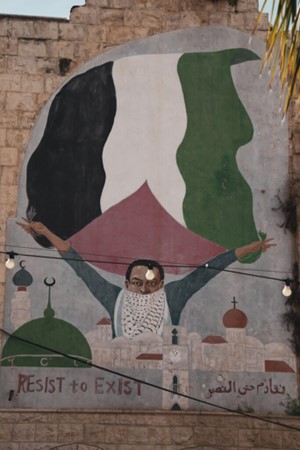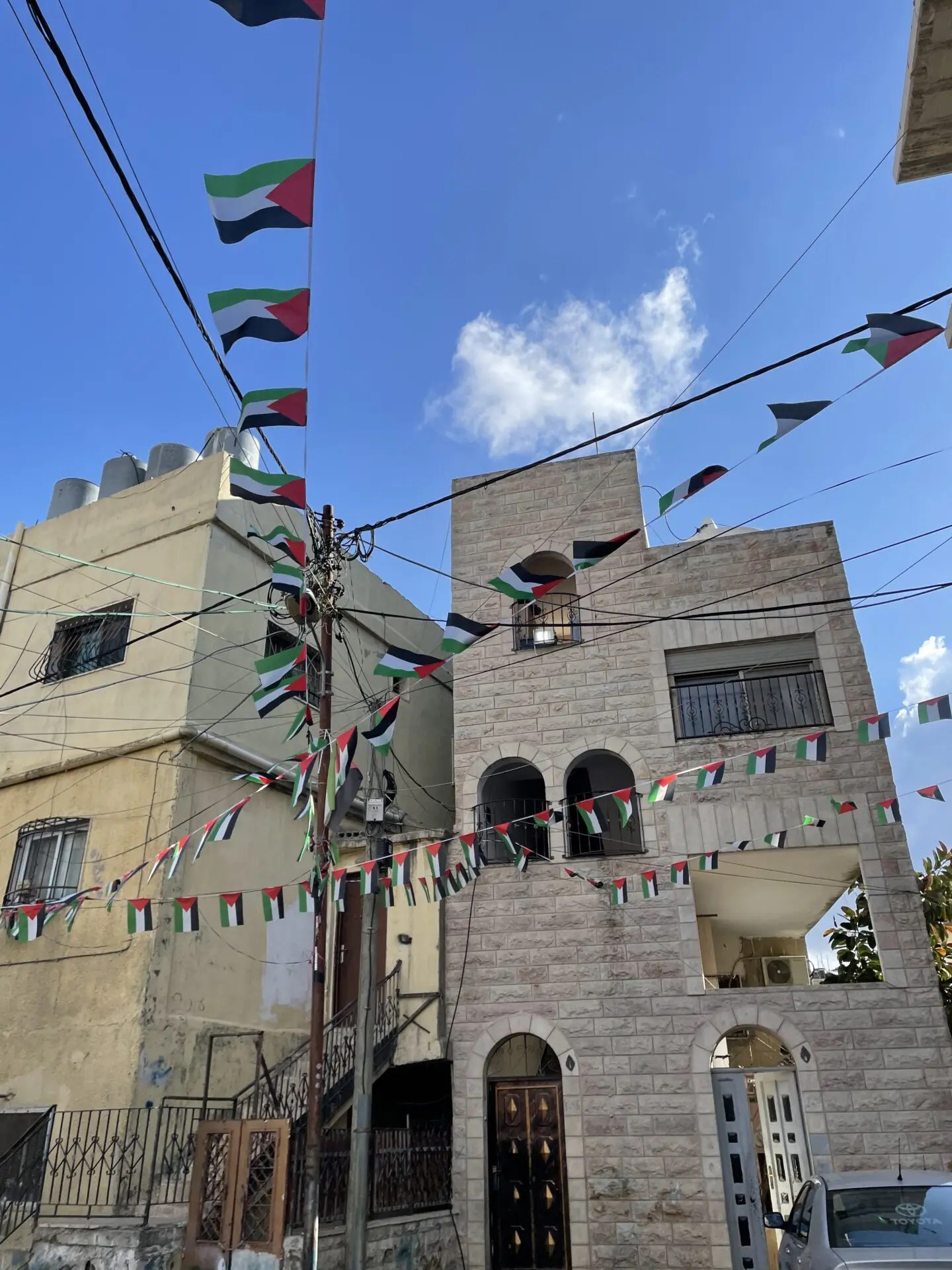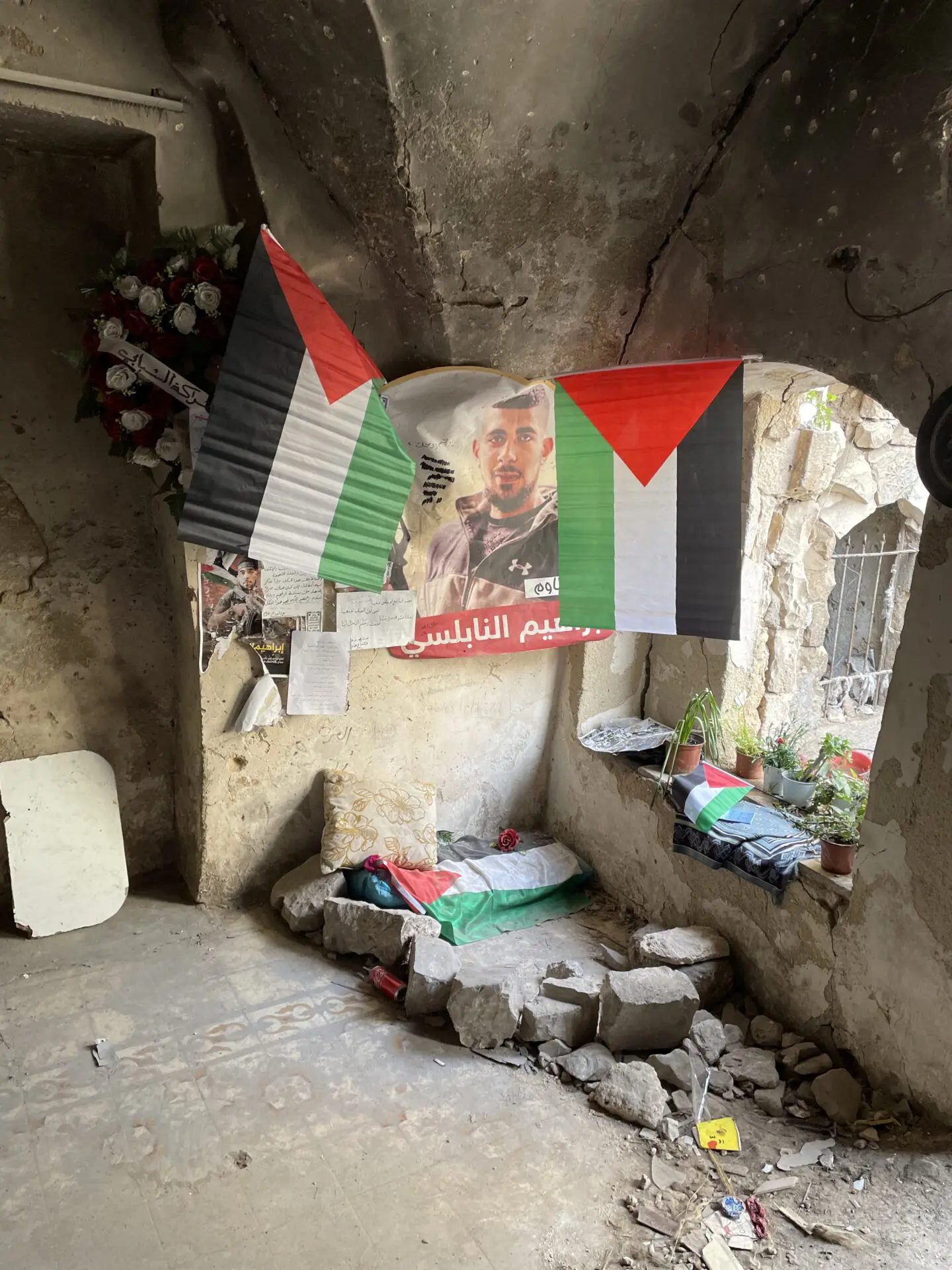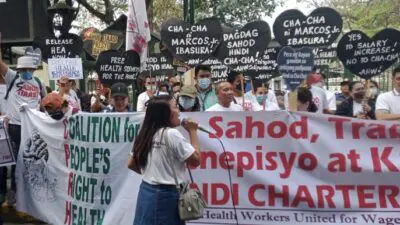Running a marathon in Palestine, with a Third Intifada at its back?
Reportage, Testimony – Skurre93
Together with 10 other young people, Jorn Verschuere travelled to Palestine to take part in the Palestine Marathon. He wrote down his impressions of this visit and learned a lot about the struggle for self-determination of the Palestinian people, which he goes over here in his own words.
Monday 3 April 2023 10:30am
Spread the love
With 11 Belgians, we participated in the Palestine Marathon through Viva Salud. During our stay, we also learnt about the different aspects of the Israeli occupation of Palestine.
Despite the festive mood during the marathon, we could not escape confronting the growing escalation in the region. Is the Third Intifada lurking around the corner? It is the question we returned home with.

It was a resigned and festive mood in Bethlehem on Friday, March 10, 2023. About ten thousand runners, from 90 different countries, took part in the Freedom of Movement Palestine Marathon.
The trail leads participants through the centre of Bethlehem, past the apartheid wall and through the Aida refugee camp – the most tear-gassed place in the world, among other places.
With the marathon, the organisation aims to raise awareness of the restrictions on Palestinian freedom of movement and the ongoing Israeli occupation. Exemplarily, the website writes: “Marathon runners everywhere can ‘run into a wall’ due to the physical and emotional strain of completing the 42-kilometre running course. In the state of Palestine, runners are literally running on the wall.”
That you bump into several walls in Palestine, I can only agree – especially after walking 42 kilometres along the hilly course. But I did not only encounter the wall figuratively.

Travelling through Palestine means encountering checkpoints every so often, targeting soldiers and witnessing continuous humiliation. It is the day-to-day reality that every Palestinian faces. It is like undergoing the physical and emotional strain a marathon runner faces, again and again, day in and day out.
In stark contrast to the festivities of the marathon was the harsh reality we faced in Palestine the days before. The inexorable continuation of the Israeli occupation and its apartheid regime was nearing its boiling point.
The hopelessness of the situation, the murderous Israeli raids ever increasing in frequency and intensity, the total loss of legitimacy and control of the Palestinian Authority … It seems to make escalation inevitable, to which the question arises: “Did we just run a marathon with the Third Intifada at our backs?”
The Second Nakba in Oslo
Whatever the answer to the above question, it cannot be understood without looking back at two crucial years: 1948 and 1995. The year 1948 is known to most as the year of Israeli independence and statehood.

However, the same year is remembered by Palestinians as the Nakba, or ‘catastrophe’. It marked the uprooting of Palestinian society in which more than 700,000 Palestinians were displaced, 531 Palestinian villages were destroyed and this was the beginning of the Israeli occupation of Palestine.
After more than 70 years, hundreds of thousands of Palestinians still live in refugee camps. Despite the passage of time, they still consider this a temporary place of residence.
Anyone visiting the Aida refugee camp in Bethlehem will see a huge ‘Key of Return’ resting on the entrance gate, symbolising the keys many Palestinians still have to their original home and embodying their deprived right of return.
The Oslo Accords in the 1990s promised an end to the occupation and the beginning of Palestinian self-rule. However, 30 years on, Palestinians see the accords as a capitulation to Israel and a second Nakba.
Indeed, those accords divided the West Bank into three zones:
- Zone A (18%) is administered by the Palestinian Authority (PA);
- Zone B (20%) civilian administered by the PA but under Israeli military control;
- Zone C (62%) is under full Israeli administration.
The area was reduced to a patchwork of enclaves, military checkpoints and eventually the construction of the apartheid wall declared illegal by the International Court of Justice.

Strategic locations such as industrial areas, water resources and resource presences were reduced to Zone C and thus came into the hands of the Israeli state. Even when the apartheid wall was built, the agreed borders were often taken for a loop in order to have complete control over these areas.
Partition and military checkpoints also mean the total subjugation of Palestinians’ freedom of movement to Israel, where Palestinian villages and towns can be hermetically sealed off.
In addition, illegal Israeli settlements in the West Bank continue to sprout like mushrooms, accompanied by the ongoing displacement of Palestinians, the construction of the apartheid wall and the increasing number of military checkpoints.
Despite the fact that the agreements were often seen as the first step towards Palestinian self-determination, it was Oslo that led to the impossibility of reaching a so-called Two-State Solution and encouraged the expansion of the occupation. “After all, how can you achieve statehood without territorial unity?” our guide asked cynically.
Impatience of Palestinian Generation Z
While the Oslo Accords have proved dead letter, uneasiness and impatience are rising among the Palestinian population, especially the youth. The hopelessness of the occupation, the continuous humiliations – for instance, our guide in Hebron was literally spat at by Israeli youths – and the lack of any future prospects drives them further into despair.
Added to this is a general disillusionment with the Palestinian Authority, which is increasingly seen as a puppet of the Israeli government and has therefore lost any legitimacy.
In addition, one of our guides also spoke about the emerging phenomenon of ‘survivor’s guilt’ among Palestinian youth. Quasi every Palestinian has a relative, friend or acquaintance who has been killed by the occupation.
As a result, the survivors often develop a sense of guilt for surviving the occupation but not having done anything against it. This also manifests generationally, with the post-Oslo generation blaming the older generation for a certain form of passivity regarding the occupation.
As a result, a growing number of young people see armed resistance as the only remaining way out. One such new armed resistance movement is the Lions’ Den (the lion’s den), which came on stage in the summer of 2022.
It organises attacks on Israeli military checkpoints and illegal settlements. Little is known about the movement’s background except the claim that they operate independently of any political party or ideology and that they are united in their (armed) resistance to the Israeli occupation of Palestine.
On 22 February, the Israeli army organised a raid in the historic centre of the City of Nablus to eliminate some Lions’ Den leaders. In the raid, 11 Palestinians were killed, hundreds were injured and houses were completely destroyed.
Despite the town being an A-zone, the Israeli army was given no obstacle by the Palestinian security forces to enter the town, contributing to the further disappointment of the population in the Palestinian Authority1 .
For the people of Nablus, and by extension many in Palestine, the members of Lions’ Den are heroes and die a martyr’s death. For many, they are a new source of hope in the struggle against Israel’s apartheid regime.
Witness to this are the many posters in the city heroically depicting the martyrs, the vengeance sites transformed into a pilgrimage site and the open bearing of arms by members in the city centre. The events in Nablus were not an isolated event, nor is the rise of Lions’ Den.

It must be placed in an increasing spiral of confrontations and violence. With 150 Palestinian victims, 2022 already saw a record number of killings by the Israeli occupation army or vigilante settlers, and with 80 victims after the first two months of this year, it seems that 2023 will surpass that figure like an express train. It has been since the Second Intifada in the early 2000s that there have been so many Palestinian casualties.
Since Netanyahu’s new far-right government took office in late 2022, the Apartheid regime is no longer disguised or swept under the carpet but is coming out openly. In the fight against Lions’ Den, it was already announced to impose collective punishments for their environment and family.
The Lions’ Den responded to the raid in Nablus by killing two Israeli settlers in the Palestinian village of Huwara, a few kilometres south of Nablus. Thereafter, dozens of Israeli settlers invaded the village, burning dozens of Palestinian houses and cars, resulting in one death.
It is the manifestation of vigilante collective punishment that took place under the observing eye of the Israeli occupation army and was condoned by Israeli Finance Minister Bezalel Smotrich with the words “I think the entire village of Huwara should be wiped out”.
During our stay in Palestine, an Israeli raid took place in the northern Jenin refugee camp. Then six people were killed, including the perpetrator who had killed settlers in Huwara.
In Jenin, too, the Israeli army went on a three-pronged attack: the entire city was reduced to a battlefield, collateral damage is part of the collective punishment, and even ambulances were taken under fire.
That evening, in Ramallah (north of Jerusalem), we witnessed a spontaneous demonstration in solidarity for the victims, supported by the battle songs of the Intifada echoing through boom boxes in the streets. The day after, a general strike took place in Palestine, an expression of collective rage and solidarity.


An imminent Third Intifada?
Will there be a Third Intifada? It is a question that crossed our lips several times in conversations with our guides and partners. Of course, none of them can simply predict it.
But there was unanimity on the increasing escalation as a breeding ground. The ongoing occupation and relentless hopelessness is creating an increasingly volatile situation where Palestinians see no way out other than armed resistance.
The new Netanyahu administration’s overtly radical ethno-religious discourse and accompanying raids only act as a red rag to a bull in this regard. The volatility is further fuelled by the fact that, unlike the previous Intifada, the Palestinian Authority has lost its full legitimacy and there is no longer a leading figure like the late Yasser Arafat who can speak on behalf of the Palestinian people, let alone empower an underground and fragmented resistance movement.
Ramadan, which this year overlaps with the Jewish holiday Passover, is eagerly awaited. For Palestinians, Ramadan is synonymous with increasing provocation and repression by the Israeli government and settlers.
The trigger for the previous Intifada was the then Israeli opposition leader Ariel Sharon’s provocative visit to the Temple Mount and the holy Al-Aqsa Mosque in East Jerusalem.
The May 2021 crisis also found its trigger in the storming of the same mosque by Israeli security forces. For many Palestinians, the question is not whether there will be such a provocation this year but what it will lead to.
1 Part of the Oslo Accords was that the Palestinian government was not allowed to call itself “government” because, according to Israel, that implied recognition of a state. Hence the somewhat bizarre name Palestinian Authority (nvdr).
